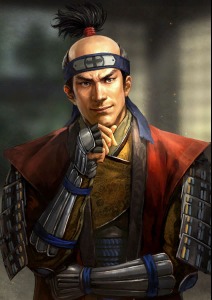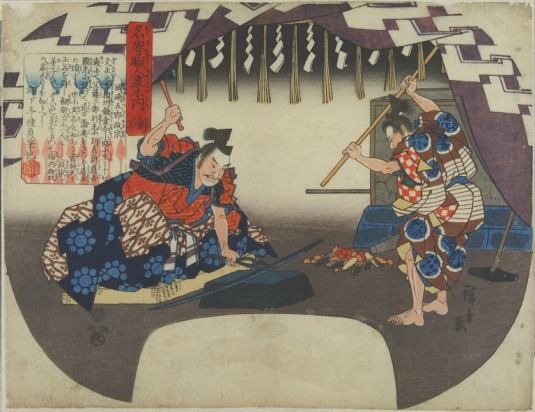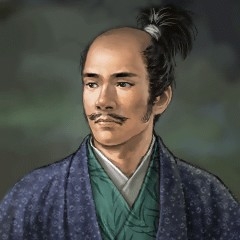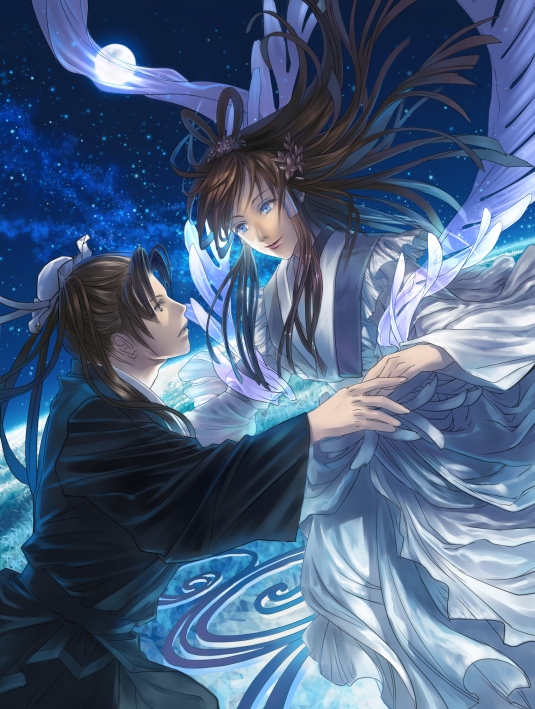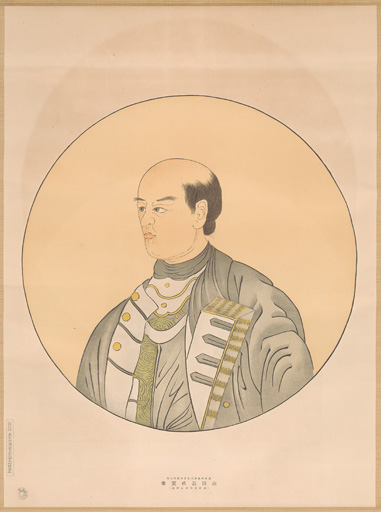Note: Watch the video…you get to see me in costume in crude Viking armor with a silly axe.
A few years ago I stumbled upon a game by a little Indie group called Logic Artists. It was called Expeditions: Conquistador wherein you played as a Spanish Conquistador sent to 15th century Central America. Along with you was your Hermandad, a group of your most trusted supporters.
Well Logic Artists have recently released a new game in the Expeditions series…Expedition: Vikings. And that is why those of you following me on social media have seen very little of me over the past month.
In Vikings you have a Hird with you, which is your most trusted supporters amongst your tribe of Scandinavian warriors. These Hirdsmen are the characters you will travel through Denmark and the British Isles with – they are your only supporters when you cross the ocean as a Viking.
So…were there similar ideas to the Hermandad or the Hird in Japan?
Of course there were. They were called Hatamoto.
Hatamoto literally means Under The Banner, denoting someone who would be nearby you in a military camp i.e. someone ‘Under Your Banner’. You see Hata means flag or banner and Moto, of course, means underneath or at the base of.
Hermandad, as I mentioned from Conquistador, means Brotherhood and can easily be compared to the Italian term Fraternity. Hermandads were essentially groups of vigilantes who took up arms to protect the local populaces of Iberia from the Moors. One theory is that they actually modeled themselves off the Shurta, an Islamic peacekeeping force of the post-Mohammed Muslims. I find this ironic since they were Christian Spaniards who, ostensibly, were protecting fellow Christian communities from invading Muslims…by acting like the Muslim police.
A good example of a Hermandad in contemporary media is actually, strangely enough, Kurosawa’s epic film Seven Samurai. In the movie a group of, you guessed it, seven samurai gather together to protect a village from bandits. This would be a Japanese version of a Hermandad.
As for the Viking version of things, a Hird was a group of a Scandinavian lord’s closest personal retainers. You may have heard of Huscarls – that is Freemen of the House. Freemen of course referring to the fact that they were not slaves and the house referring to the immediate household of the lord in question. Huscarls were also known as Hirdsmen, members of a lord’s Hird – his household. This is because in Scandinavian societies lords would often have large houses, hence the term longhouse, where their immediate family and servants would live in the longhouse with them. If not inside, then they would often live very nearby. So someone who lived in the lord’s house and served the lord and his family could be a member of his Hird.
So I told you all that to tell you this…Hatamoto were similar to Hermandads and to Huscarls, but they were not the same. The Hatamoto were the closest retainers of a daimyo. They may be family members or just clansmen from a family who had served loyally, perhaps for very a long time.
In our story of Minamoto no Yoshitomo’s betrayal of his father and brothers, the two men I mentioned who carried out his deeds: Kamada Masakiyo and Hadano Yoshimichi – they would be similar to Yoshitomo’s hatamoto. Minamoto no Raikou’s four chief retainers – Watanabe, Usui, Urabe, and Sakata would be his hatamoto.
Of course…in the times of both Yoshitomo and Raikou, they wouldn’t have been called Hatamoto. They would have been Gokenin – Housemen, stemming from Goke which means house and Nin which means person. Aha, see the similarities between the Gokenin and the Hirdsman?
Now one thing to note is that there was another, similar term: Kenin. Kenin were retainers, indentured servants of a household who were in a classification above slaves. Sometimes the honorific prefix ‘Go’ was attached to the word Kenin, turning it into Go-Kenin…which basically meant ‘Prestigious House Man.’ At times these two version of Gokenin are apparently used somewhat interchangeably but once you start getting into the later Heian periods and into the Sengoku the Go-Kenin version really doesn’t apply to the type of people who eventually evolved into the Hatamoto. Most hatamoto were free men of samurai status, or even daimyo in their own right, not indentured servants of a prestigious house.
Technically speaking, the Gokenin were the retainers who served the Kamakura and Muromachi Shoguns directly. The Gokenin acted on the authority of the Shoguns and could collect taxes, gather and field an army, and spend on public works as they saw fit – in the Shogun’s name and on what was theoretically the Shogunate’s lands.
So eventually the Gokenin gave way to the Hatamoto – the closest retainers of a daimyo, any daimyo. As I said, technically speaking the Gokenin served the Shogun directly; but Hatamoto could serve anyone. In the game series Total War: Shogun a general and lords have a slew of elite armored cavalry guarding them – the game refers to these horsemen as the lord’s Hatamoto.
Technically the term Hatamoto could refer to anyone working within the lord’s command tent; the person in charge of lord’s camp guards was the Honjin-Hatamoto.
Eventually as we get into the Edo period Hatamoto became the title for the closest retainers of the Tokugawa Shogunate. The Tokugawa Hatamoto were mostly the retainer families who had served Tokugawa Ieyasu and the Matsudaira clan before that, when he was in Mikawa and stayed with him when he moved to the Kanto. Clans like the Ii, Honda, and Sakakibara.
Hatamoto were generally given lands surrounding the Tokugawa’s own domain. This is because they were expected to be the most loyal and dedicated to the Tokugawa cause. This created a buffer zone between the Tokugawa and the Fudai, the Inner Lords who had supported Tokugawa at Sekigahara but did not have the tenure under the Tokugawa to be hatamoto. Clans such as the Maeda, Kuroda, and Hosokawa.
Outside of the Fudai were the Tozama, daimyo and their clans who fell in line after Sekigahara but were either neutral in the fighting or had actually supported the enemy during the battle. Clans such as the Shimazu, Mori, and Tachibana.
Just like the various levels of daimyo, there were also various levels to the Hatamoto. On the higher end you had Hatamoto who were promoted to daimyo-level status like the Ii and Honda clans which held over 150,000 koku domains each. When Hatamoto held daimyo titles, meaning they had more than 10,000 koku worth of land, they were often placed into the Fudai Daimyo classification; because they were no longer Hatamoto – they ruled their own lands, now.
Legitimate Hatamoto would, essentially, make less than 10,000 koku per year. Beneath them was a class that utilized a term we’ve already heard before: Gokenin. Only now, these two terms mean something much different than when they were first introduced.
Gokenin and Hatamoto were both direct retainers of the Shogunate, however Hatamoto were the higher-class and were granted permission to request an audience with the Shogun. If they were in town and dinner was held, they could presumably sit in the hall with the Shogun as one of his retainers. Gokenin, however, did not have such permission and were not allowed audiences with the Shogun.
That is not to say that Hatamoto were always better off than Gokenin…but a Hatamoto was likely to have higher income, more control of their lands, and more chances for promotion. Even so, I’ve read that during the Edo period nearly a quarter of the Hatamoto ranks were destitute.
There is a term describing how powerful the Hatamoto and the Gokenin were – numerically speaking, of course. The Tokugawa utilized the term Hatamoto Hachimanki or the Eighty Thousand Shogunal Retainers. In reality there were likely only around six-thousand Hatamoto during the Edo period and about 20,000 Gokenin; at their most numerous.
For a smaller daimyo their hatamoto would consist of their most ardent personal retainers, much like the Hirdsmen of Expeditions: Viking are to your main character.
~RCS







